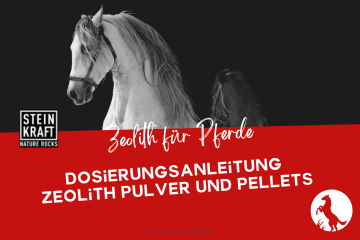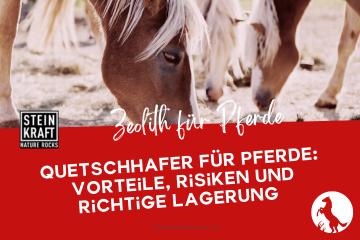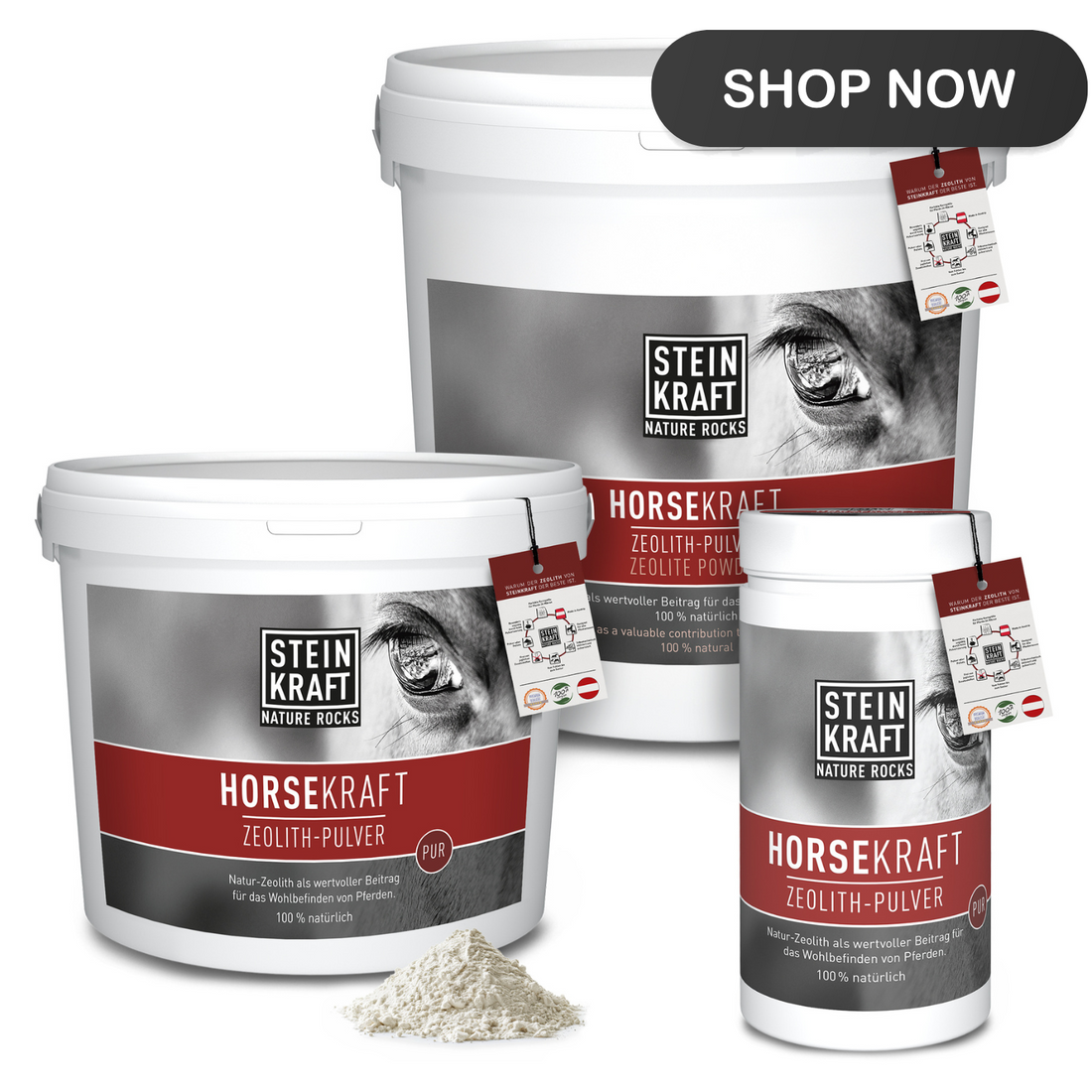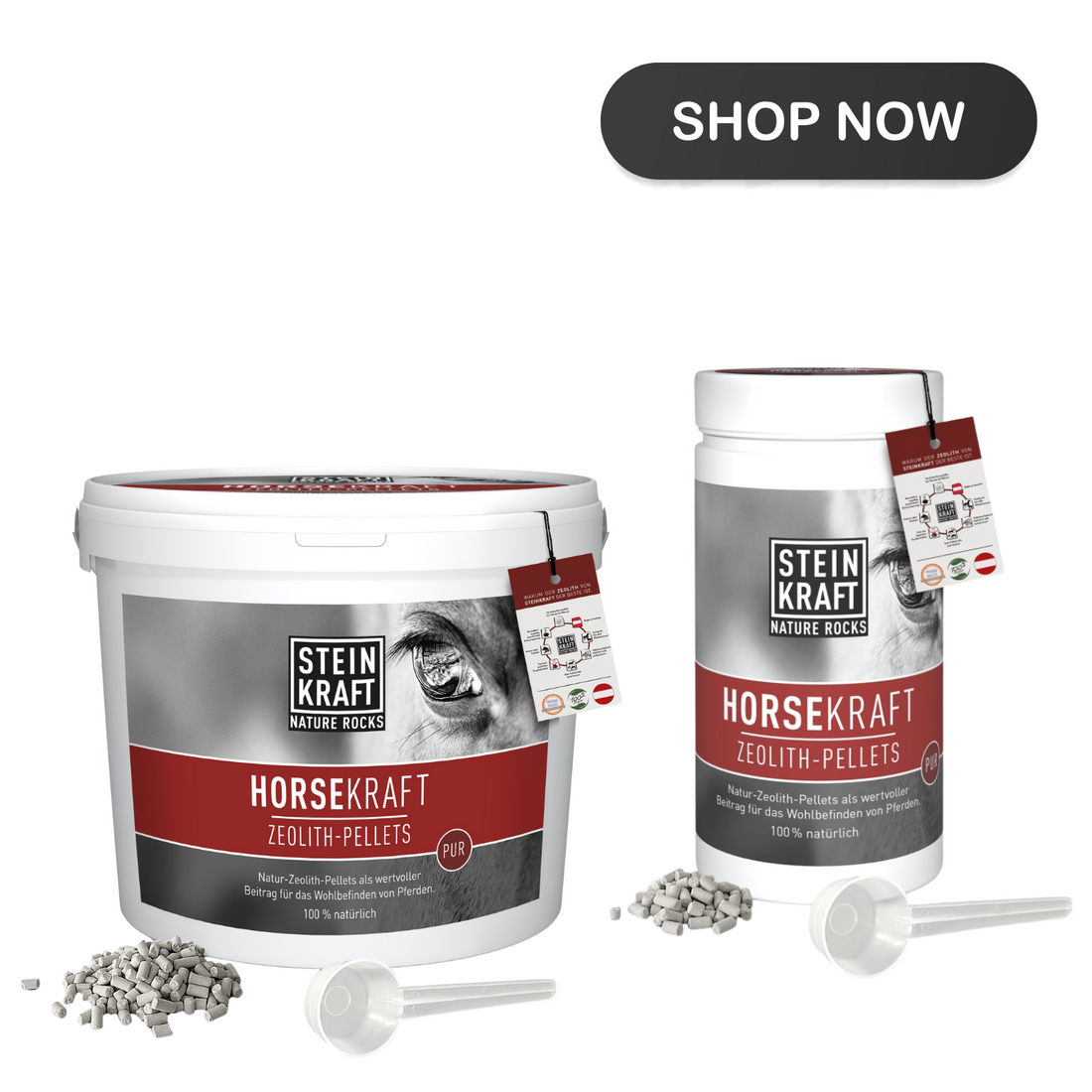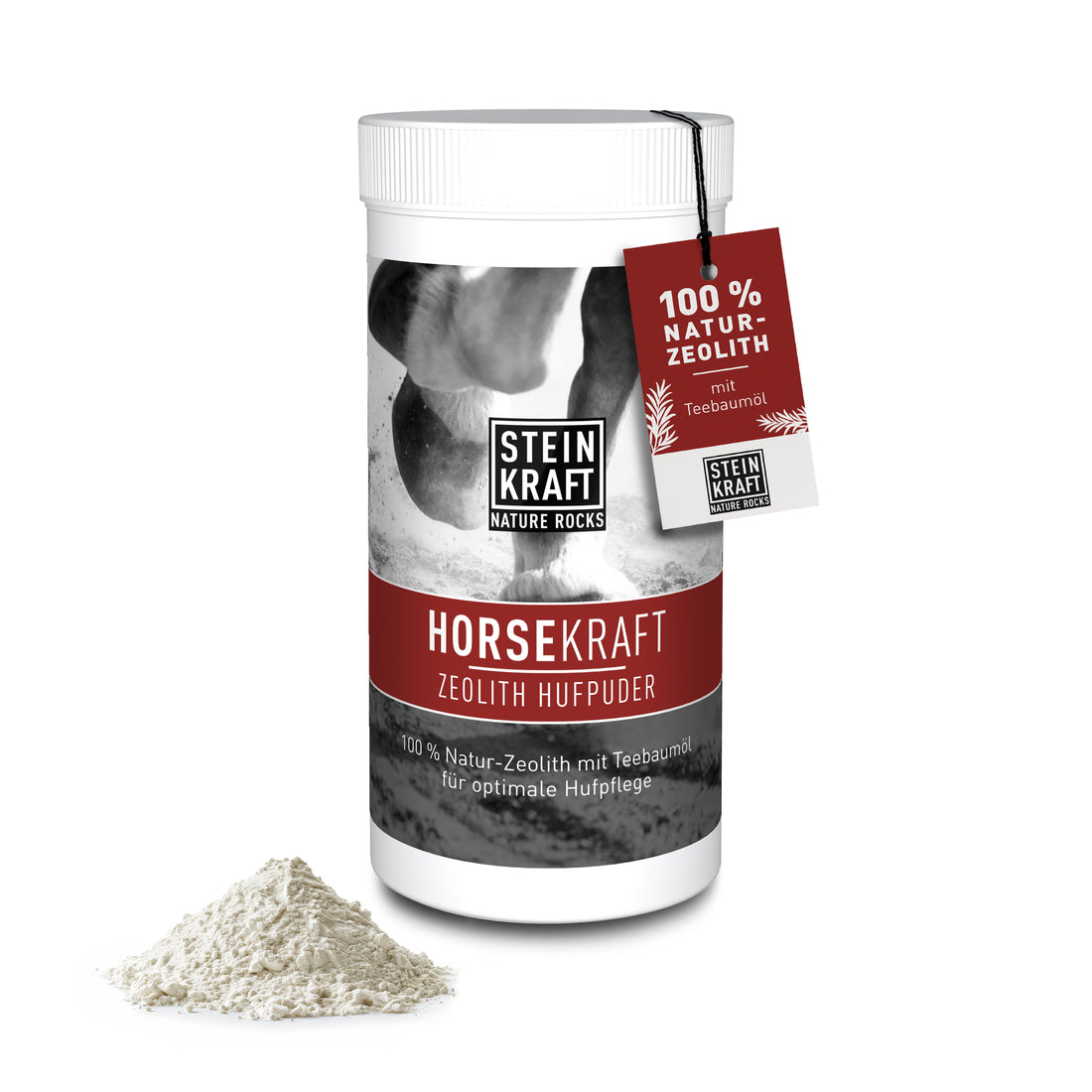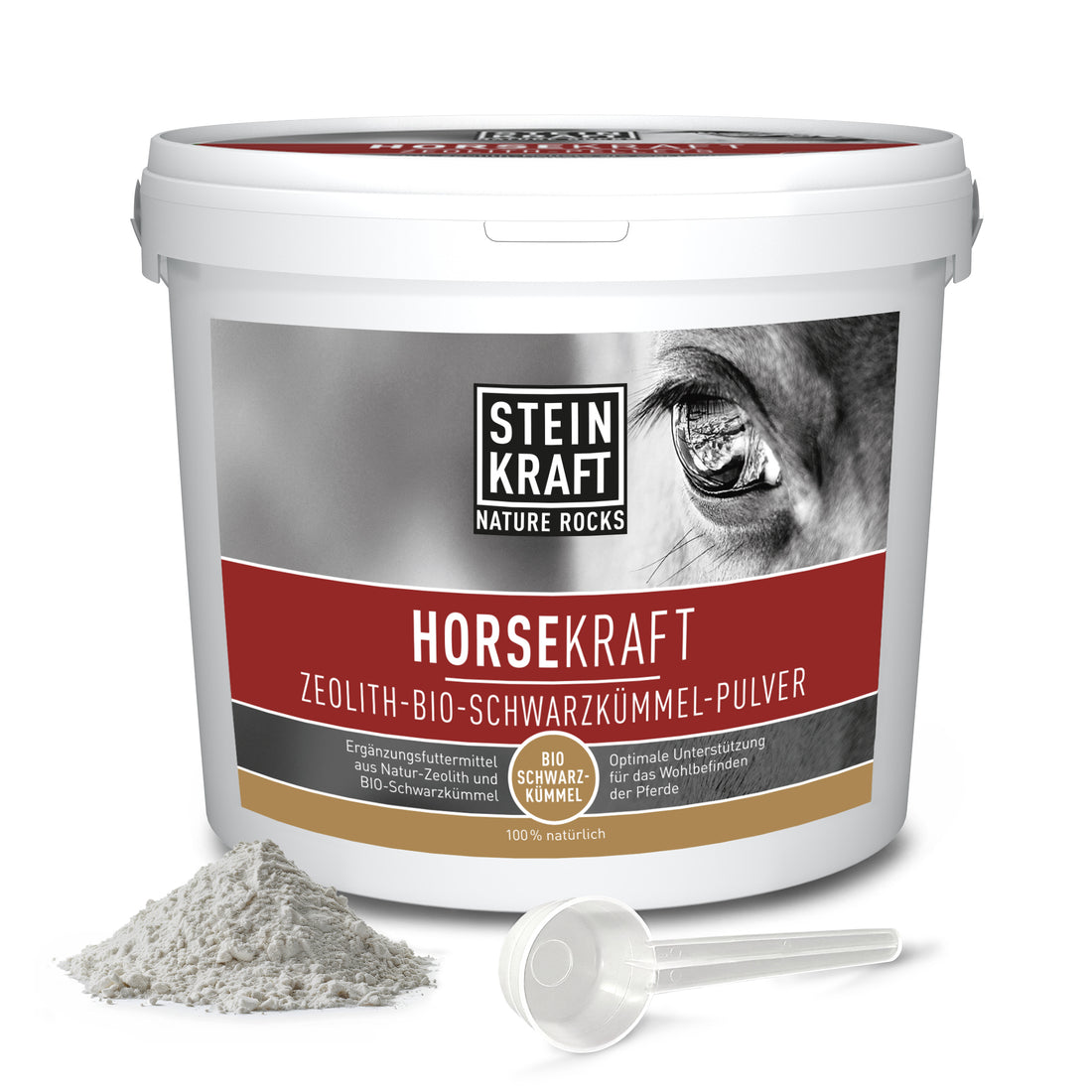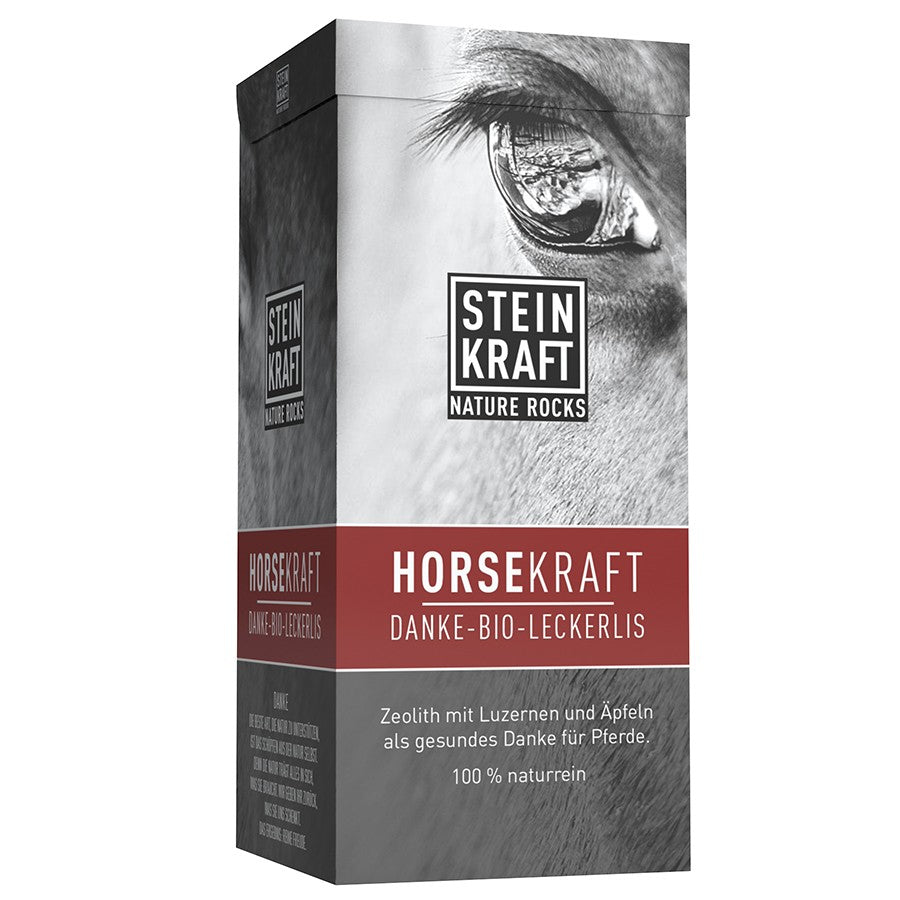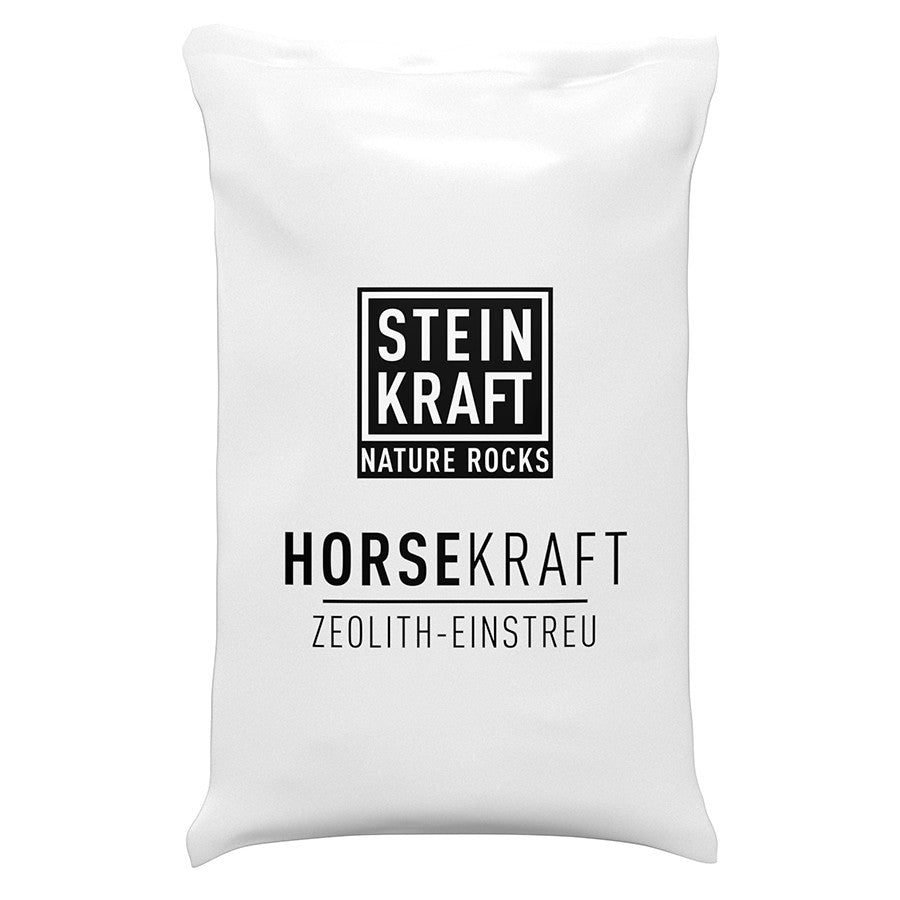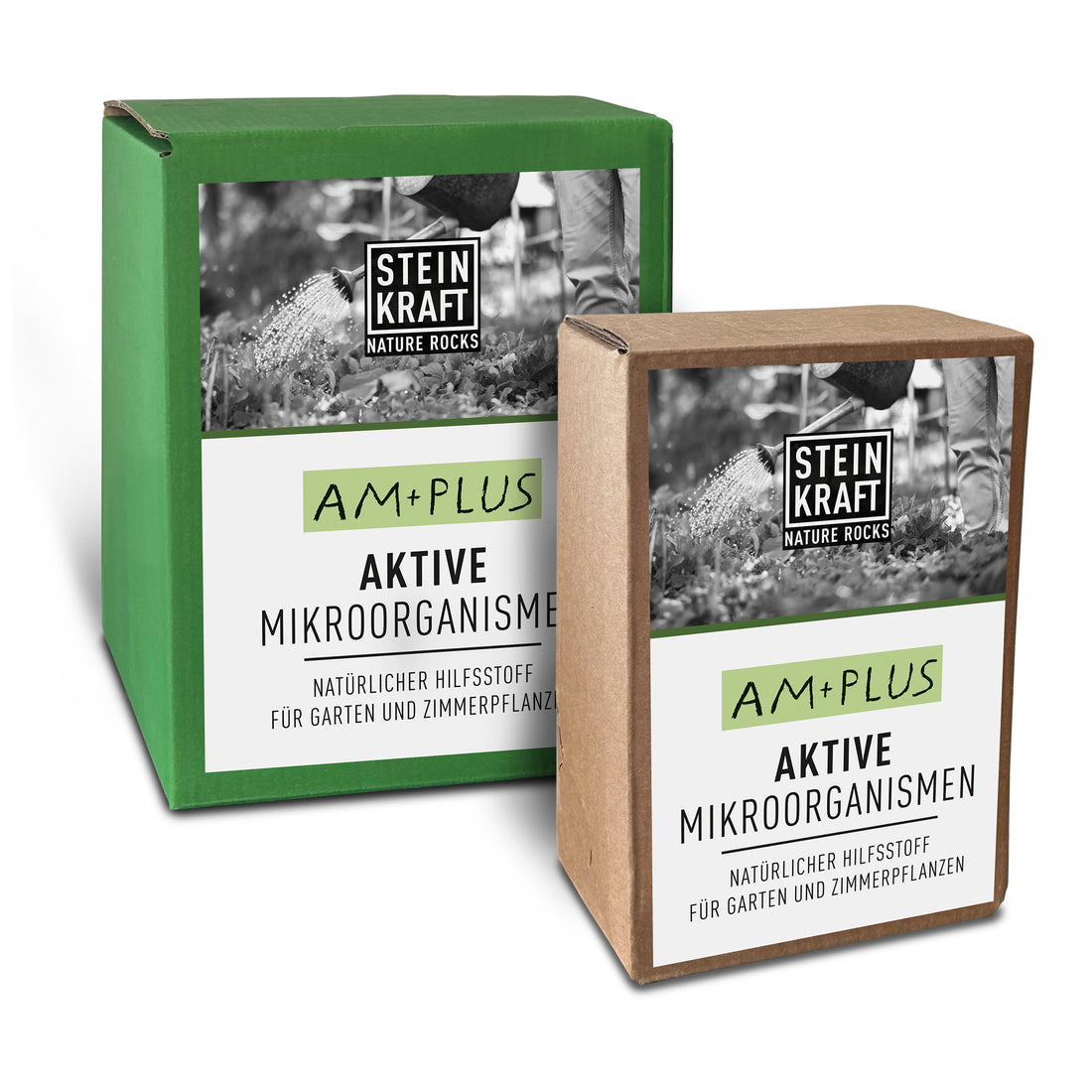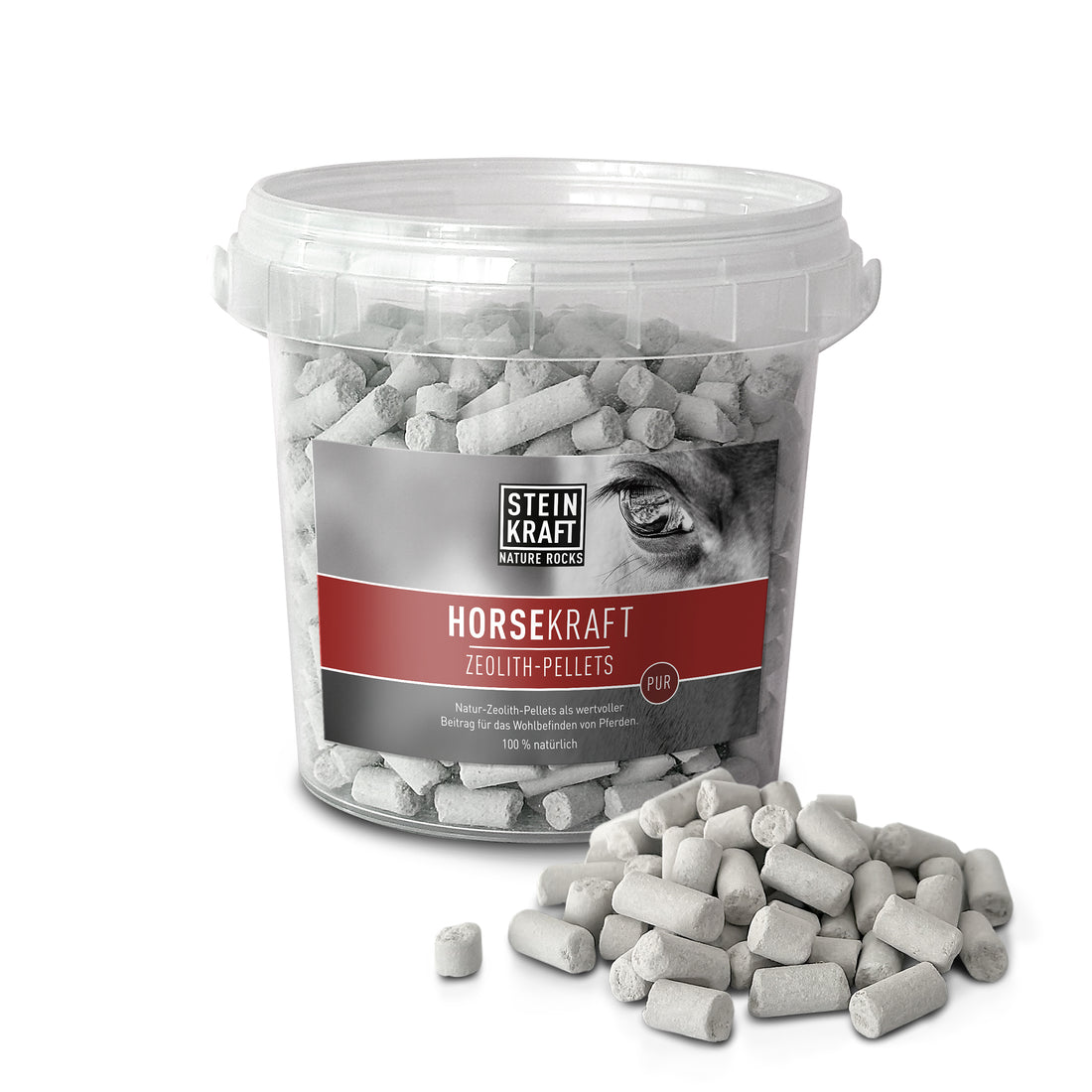Horses in autumn: Natural support during changing weather and mud
The change in weather in autumn can be quite challenging for our beloved horses. When temperatures suddenly drop, it rains more frequently, and the days get shorter, our four-legged friends often feel these changes more keenly than we think.
For one thing, their coat is changing, and the transition from summer to winter coat can be quite strenuous. The body needs a lot of energy to cope with the change, and this often means more stress for the immune system . Sudden, cold weather can weaken the immune system and make the horse more susceptible to colds or other infections.
In addition, paddocks and pastures often become muddy, which can lead to hoof problems . Unfortunately, damp ground promotes skin diseases like mud fever , and constant exposure to moisture damages the hooves, making them more susceptible to thrush . Anyone who has ever had a horse with hoof problems knows how uncomfortable this can be for the animals!

Our horses' digestion can also be disrupted by a change in weather. When it suddenly gets cooler and less grass grows in the pasture, the feed needs to be adjusted. This change can sometimes lead to digestive problems , which we should definitely keep an eye on.
Horses are sensitive to these changes in autumn—whether due to the weather, the feed, or the soil conditions. But with a little extra care and attention, we can help them get through this season healthy and happy!
Challenges for horses in autumn - what do I need to pay attention to with my horse in autumn?
In autumn, horse owners face some unique challenges, as the season brings changing weather conditions and changing horse needs. Here are some important aspects to consider:


- Shedding : In the fall, horses change from their summer coat to a denser winter coat. This can lead to increased energy requirements, as their metabolism is subject to greater stress. Regular grooming helps remove loose fur and promote healthy skin.

2. Feeding : As temperatures drop and fresh pasture grass becomes less available, feeding should be adjusted. It is often necessary to add hay, silage, or concentrates to meet energy needs.
3. Pasture conditions: Autumn rains can make pastures muddy, increasing the risk of hoof diseases such as mud fever. Horses should be checked regularly for such problems, and it may be necessary to protect them from overly wet or muddy ground.
4. Exercise and training: The colder temperatures and wet ground can make training more difficult. It's important to still give the horses sufficient exercise and ensure a longer warm-up period to prevent injuries.
5. Light and day length: With shorter days, it is often more difficult to find enough time for training or grooming, especially if you do not have access to a well-lit riding arena.
6. Flies and parasites: In early autumn, insects such as horseflies and flies may still be active. It's also important to consider deworming, as the risk of parasites is often higher in autumn.
7. Blanket management: The question arises whether the horse should be blanketed. Not all horses need a blanket, but older or clipped horses may need additional protection in the fall.

So, in the fall, make sure to check your horse's needs regularly and respond accordingly to changing conditions.

Zeolite can be used in a variety of ways to support horse husbandry in the fall. Zeolite is a natural mineral with a microporous structure that is becoming increasingly popular in horse care and feeding due to its binding and cleansing properties. Here are some ways zeolite can be helpful in the fall:
1. Detoxification and support of the digestive system: In autumn, when the forage supply changes (from fresh grass to hay or concentrated feed), a horse's digestion can be strained. Zeolite as a feed additive binds pollutants, toxins, and heavy metals in the intestine, helping to stabilize the intestinal flora and support digestion. This can also reduce the risk of colic .

2. Strengthening the immune system: The change of coat and the fluctuating weather conditions in autumn can put a strain on a horse's immune system. Zeolite contains valuable minerals and trace elements such as silicon, which can strengthen the immune system and make the horse more resistant to disease.
3. Hoof health and skin problems: Wet and muddy conditions in the pasture can lead to skin and hoof problems such as mud fever or thrush . Zeolite can be applied externally to support the healing of wounds and skin irritations due to its anti-inflammatory and antibacterial properties. It helps absorb moisture and forms a protective layer on the skin.

4. Reducing pollutants in the stable: Zeolite can also be used as bedding to improve air quality in the stable, as it binds ammonia and moisture. This creates a healthier stable climate, which is especially important in the fall when horses spend more time indoors and ventilation is limited due to colder temperatures.
5. Support during coat change : Since zeolite can stimulate the metabolism, it could support the coat change by helping the body to excrete excess metabolic products and optimize mineral supply.
At the end of August, demand for zeolite wound ointment and zeolite hoof powder at Steinkraft-Zeolite increases.
At this time of year, the transition from summer to autumn slowly begins and this brings with it some typical problems for horses and their owners.
Here are a few reasons why these products are in such demand at this time:
1. Wetter weather: With the onset of the first autumn rains, pastures and paddocks often become muddy. Horses that spend a lot of time outdoors often stand on damp or even muddy ground, which puts a lot of strain on their hooves. This wetness can impair hoof health, and hoof powder is used to absorb moisture and dry the hoof before serious problems like thrush develop.

2. Increased skin problems:
Frequent contact with wet ground also increases the risk of skin diseases such as mud fever. The skin in the pastern area becomes softened by the wetness, making it vulnerable to bacteria. Zeolite wound ointment helps protect the skin and treat minor injuries or inflammation.
3. Minor injuries caused by shedding:
When horses begin to shed their coats at the end of August, their skin is often more sensitive, and minor abrasions are more likely to occur. Especially on the legs or belly, where they are more likely to chafe, wound ointments are needed more frequently to care for the skin and soothe irritation.

4. More stable time: When horses spend more time in the stable due to the change in weather, damp conditions can also occur there. This also promotes skin and hoof problems, which is why owners are increasingly turning to zeolite hoof powder and zeolite wound ointment as a preventative measure. Zeolite bedding is also becoming more popular. Take a look at this natural bedding. It binds the ammonia and pollutants, and of course, the moisture in the bedding.


In short, from the end of August onwards, the weather changes, and with the wet, muddy ground and the onset of shedding, skin and hoof problems in horses increase. Therefore, hoof powder and wound ointment with zeolite are essential care products for horse owners and in every stable first aid kit during this time.
And now, finally, what Tanja Braune writes:
Volcanic rock power for healthy hooves in winter
Who hasn't experienced this: The snow has melted, and there are deep puddles in the paddocks. The horses stand in water and mud all day long – and their hooves gradually become wetter and more sensitive. Thrush often develops, i.e., the decomposition and gradual transformation of the frog into a slimy, foul-smelling, discolored mass caused by putrefactive bacteria. (Definition from "The Hoof" by F.-L. Lütke) Thrush can be recognized by deep frog furrows and the putrid stench released when the hoof is picked. It is triggered by putrefactive bacteria, i.e., bacteria that are found everywhere in the soil and penetrate small injuries to the frog. In the absence of air, they then lead to the decomposition of the frog and, in the worst case, to inflammation of the pads and the hoof capsule. Many horses are particularly affected in spring.
There are several factors that occur, especially in winter, and promote the development of thrush: With little exercise and prolonged standing in the stable, the horse's ability to clean itself through the alternating hoof mechanism is impaired. Furthermore, ammonia from urine in the bedding and from wet ground in the paddock accumulates. This corrosive effect on the thrush and provides additional habitat for bacteria. If the horse's hoof is covered in dirt, air can no longer reach the hoof, and putrefactive bacteria gain the upper hand and decompose the frog.
Therefore, it is definitely worth paying attention to certain everyday aspects of posture:
Dry, ammonia-free stables, rented paddocks, and daily hoof care are essential to preventing thrush. If thrush does occur, it is recommended that the farrier thoroughly trim away all rotten areas on the frog. "By the way," assures Swiss hoof orthopedist Armin Eberle, "daily rinsing with water does not harm the hoof. On the contrary: It washes away the rotting pathogens on the ammonia. Afterward, however, the hooves should be thoroughly dried and not greased, as otherwise oxygen will not penetrate to the deepest areas."
"To counteract thrush, appropriate hoof trimming is necessary, aimed at widening the hoof. Following this, you can clean and dry the affected areas with a hoof powder made from natural zeolite. It's best to brush the middle frog groove with a clean cloth or gauze bandage and then apply the hoof powder, or even gently insert it into the middle frog groove with a blunt, flat object (a wooden stick). You can further pad the frog groove with a gauze bandage or some cotton wool," recommends Martina Wimmer, a hoof shoe professional from St. Johann in Tirol. "If you want to play it safe, you can also seal the horn with a hoof balm in addition to the hoof powder."

Steinkraft's hoof powder is made from natural zeolite. This is a volcanic mineral that, when finely ground, not only binds hoof bacteria like an absorbent cloth, but also substances responsible for the transformation of horn. This natural zeolite, with its unique properties, repels fungi and bacteria while simultaneously binding excess moisture from the wet hoof caused by putrefactive bacteria. Additionally, this zeolite hoof powder is enriched with organic tea tree oil, which boasts antiseptic, antibacterial, and fungicidal properties. Thus, Steinkraft's natural hoof powder acts like a protective film, providing long-term care for the hoof. Its action naturally disinfects and dries the affected hoof, thus not only effectively preventing thrush but also combating existing rot.






